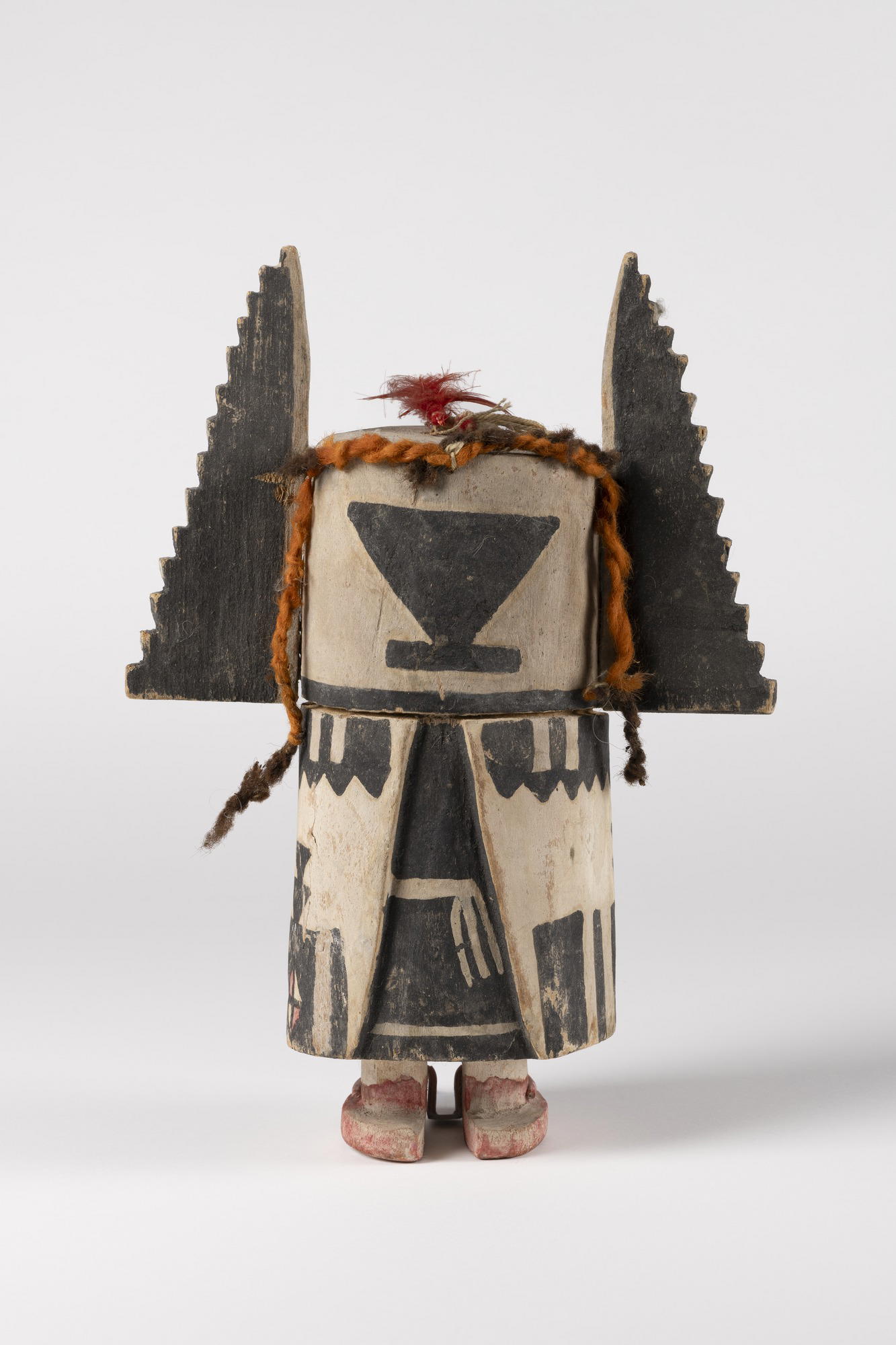Kachina Doll (Angwusnasomtaqa)
Hopi Pueblo
1 of 2
Object Label
In the southwestern United States, a supernatural being that represents a life-force or embodies a natural phenomenon such as the sun, the moon, a plant, or an animal is called a koko by the Zuni and a katsina (commonly anglicized as “kachina”) by the Hopi. Such beings have the power to control rainfall, crop growth, and fertility; to cure and protect; and to act as messengers between the gods and human beings. Carved kachina figures, also known as kachina dolls, are representations of these spirits and can have a sacred or an educational purpose. During some ceremonies, the carvings are given to community members to reward virtuous behavior, recognize a recent marriage, or teach children about religion. In the 1800s, a lively market for the carvings developed among non-Native collectors and tourists, giving rise to the elaborate art form that flourishes today.
Caption
Hopi Pueblo. Kachina Doll (Angwusnasomtaqa), late 19th century. Wood, pigment, wool yarn, cotton cord, feathers, 12 × 8 1/2 × 4 in. (30.5 × 21.6 × 10.2 cm). Brooklyn Museum, Museum Expedition 1904, Museum Collection Fund, 04.297.5563. (Photo: Brooklyn Museum)
Gallery
Not on view
Collection
Gallery
Not on view
Collection
Culture
Title
Kachina Doll (Angwusnasomtaqa)
Date
late 19th century
Geography
Place collected: First Mesa, Arizona, United States
Medium
Wood, pigment, wool yarn, cotton cord, feathers
Classification
Dimensions
12 × 8 1/2 × 4 in. (30.5 × 21.6 × 10.2 cm)
Credit Line
Museum Expedition 1904, Museum Collection Fund
Accession Number
04.297.5563
Frequent Art Questions
What do we know about the symbolism of the shapes on these kachinas--specifically the downward triangle?
 The triangle with the bar symbolizes the figure's facial features, and the two black triangular pieces on the sides are wings.Kachina Dolls are very powerful symbolic figures, and they convey multiple ideas and conceptions of the world. I'm sure that Pueblo people have many different ways of interpreting their message both in the abstract and more concrete sense.
The triangle with the bar symbolizes the figure's facial features, and the two black triangular pieces on the sides are wings.Kachina Dolls are very powerful symbolic figures, and they convey multiple ideas and conceptions of the world. I'm sure that Pueblo people have many different ways of interpreting their message both in the abstract and more concrete sense.
Have information?
Have information about an artwork? Contact us at

